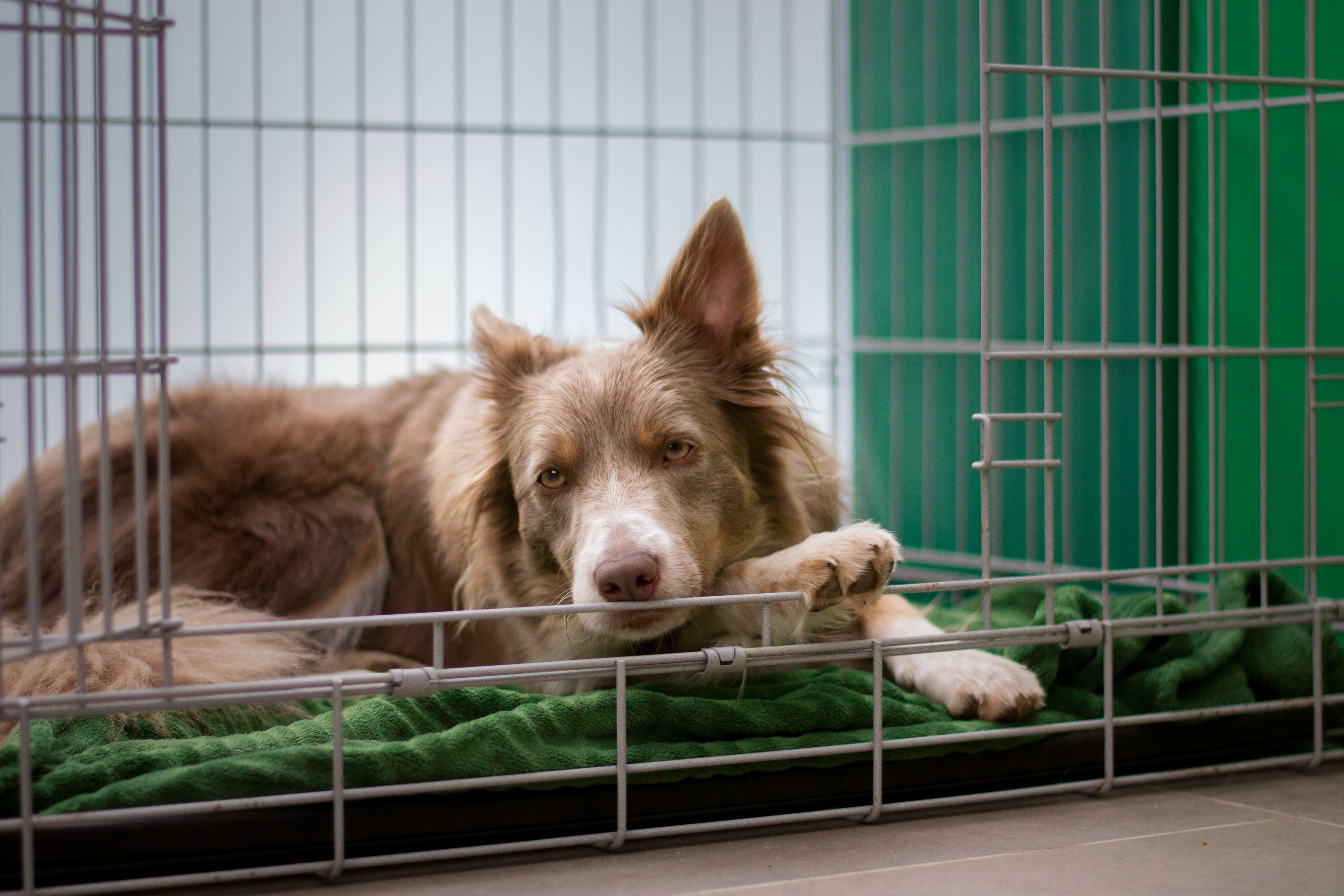Why Should You Crate-Train an Older Dog?
Crate training has no age restrictions because it can be needed with any dog. It is false information that old dogs are unteachable. In reality, crate training can benefit an adult dog's sense of safety and security. It will be handy while you travel with your dog, after surgery, or if your dog is anxious because of thunderstorms or fireworks.
How Do You Crate-Train an Older Dog?
Choose the Right Crate
Selecting the right crate is a fundamental step in crate training an older dog. The ideal crate should not only be the appropriate size but also comfortable, safe, and suitable for your dog's specific needs. Here are key factors to consider:
Size
Space to Move: The crate should be large enough for your dog to stand up, turn around, and lie comfortably. However, it shouldn't be so large that they can pace or soil one corner and sleep in another.
Measure Your Dog: To find the right size, measure your dog from the tip of its nose to the base of its tail for length and from the floor to the highest point of its head or ears for height. Add a few inches to these measurements to ensure enough space.
Material
Wire Crates: These are well-ventilated and allow your dog to see their surroundings. They are often foldable for easy transport and can be adjusted with dividers as your dog grows or changes.
Plastic Crates: More enclosed than wire crates, they can create a more den-like space for your dog. They're also good for travel, especially air travel.
Soft-Sided Crates: Lighter and more portable but less durable than wire or plastic crates. Suitable for small, calm dogs.
Heavy-Duty Crates: Designed for strong or aggressive dogs, these crates are usually made of more durable materials and have special locks.
Safety
No Sharp Edges: Ensure there are no sharp edges or protrusions inside or outside the crate that your dog could hurt themselves on.
Secure Door: The crate should have a well-functioning door that your dog cannot accidentally open.
Prepare Yourself
Patience is vital when crate training an older dog. Understand that it might take longer for them to get used to a crate compared to a puppy. Prepare to invest time and effort, and avoid showing frustration or impatience.
Introduce Your Dog to the Crate
Place the crate in a common area where the family spends a lot of time. Leave the door open so your dog can explore it on his or her own. Make it inviting with a comfortable bed and familiar toys.
Build Positive Associations
Create positive associations with the crate. Feed your dog near the crate initially, then inside it, to connect the crate with enjoyable activities.
Entice Your Dog Inside
Some treats or favorite toys can be perfect lures for dogs. Don't rush this process. It's about building trust and positive associations, not forcing them inside.
Increase Crate Time
Once your dog is comfortable inside the crate, increase their time in it. Begin with short intervals while at home, gradually extending the duration.
Try Closing the Door
When your dog seems comfortable, close the door for short periods. Stay nearby initially and gradually increase the time with the door shut, ensuring your dog is relaxed and comfortable.
How Long Does it Take to Crate Train an Older Dog?
It is difficult to tell how long it will take to crate train an older dog. Some adapt within a few weeks, while others might need a few months. Consistency and patience are crucial throughout the process.
Crate Training Tips
Never Leave Your Dog in the Crate for Too Long
A crate is not a place to leave your dog for extended periods. If they're crated too long, they might feel isolated or anxious.
Don't Force Things
If your dog looks nervous and too stressed, step back in the training process. Forcing them can lead to negative associations with the crate.
Stay Calm
Your dog can sense your emotions. Stay calm and positive to help them feel secure.
Get the Whole Family on Board
Consistency is key in training. Ensure all family members understand and follow the training steps.
Get Help
If you're struggling with kennel training a dog, don't hesitate to seek help from a professional dog trainer or behaviorist.
Conclusion
Crate training an older dog, like dog crate training for puppies, requires patience, consistency, and understanding. The question “How to crate train a dog?” has a little more complex answer when we are talking about the older dog. It might take a longer time, but the benefits are worth the effort.
Frequently Asked Questions
Is crate training an adult dog hard?
Crate training an adult dog can be challenging as it requires patience and consistency, but it's certainly achievable. Older dogs may take more time to acclimate to a crate compared to puppies, but with the right approach, they can learn to accept and even enjoy their crate.
How to crate train an older dog?
To crate train an older dog, start by choosing the right-sized crate and making it comfortable. Gradually introduce the dog to the crate with positive associations, like treats and meals, and slowly increase the time the dog spends inside, ensuring it feels safe and relaxed at each step.



